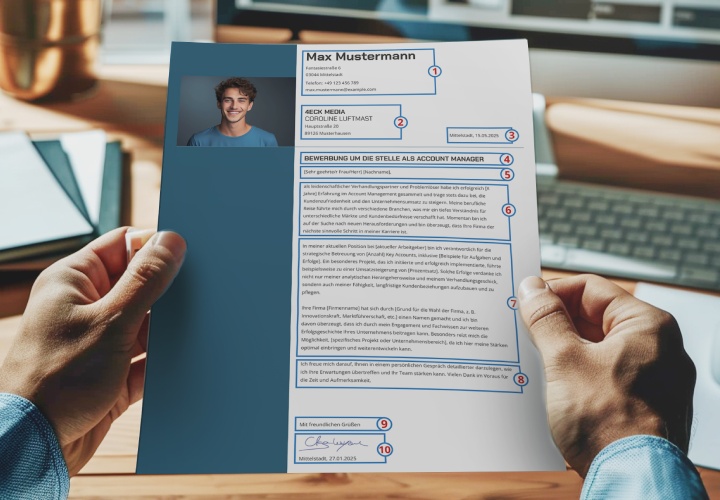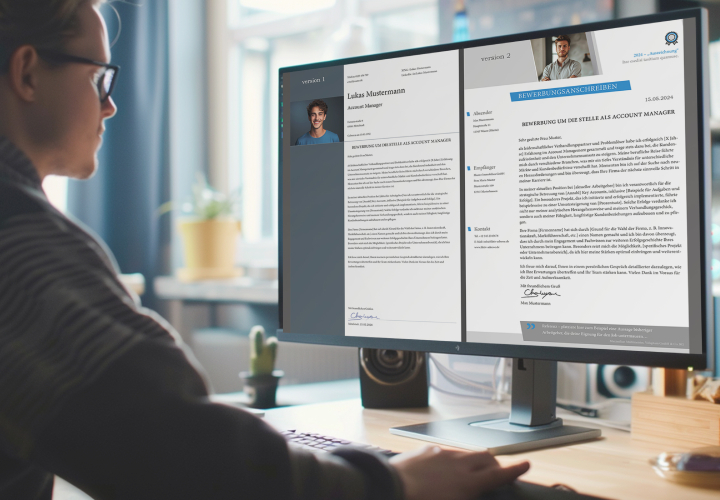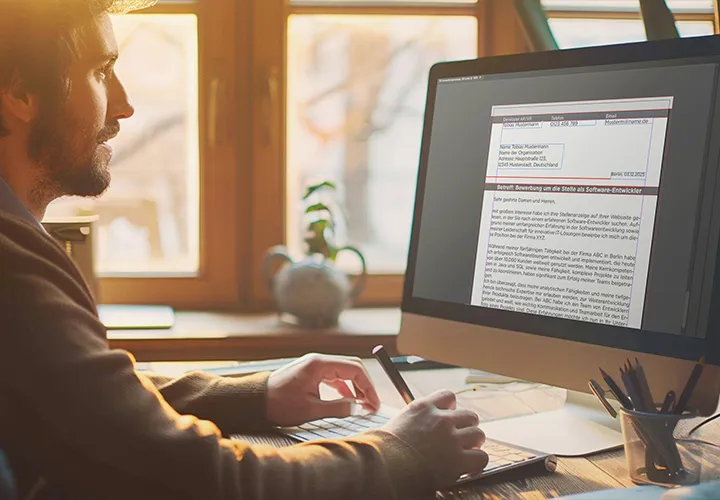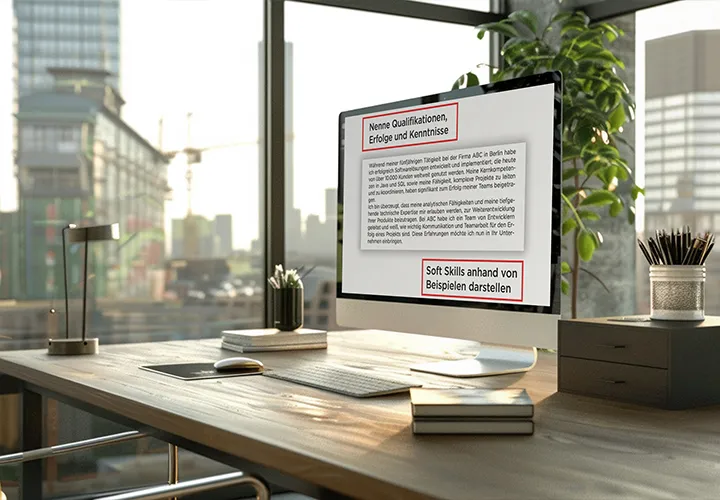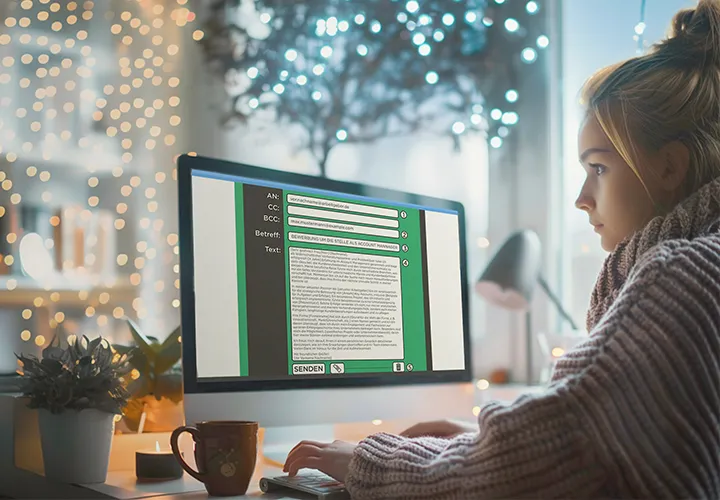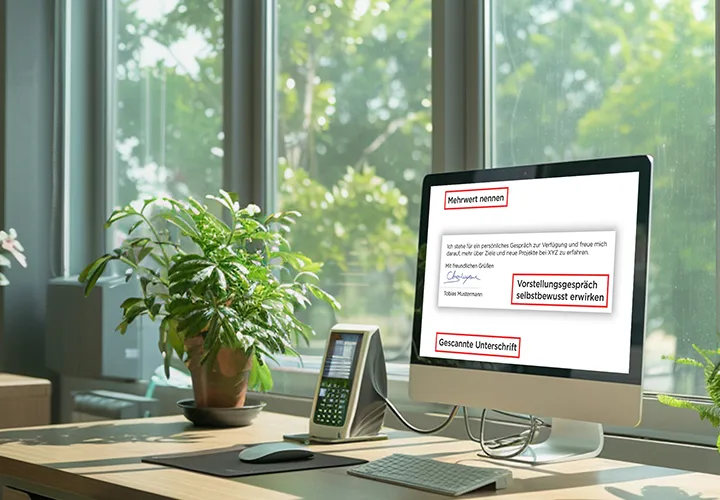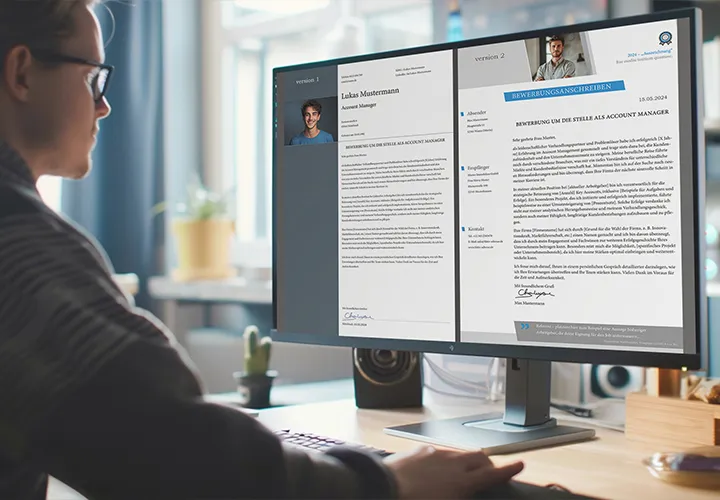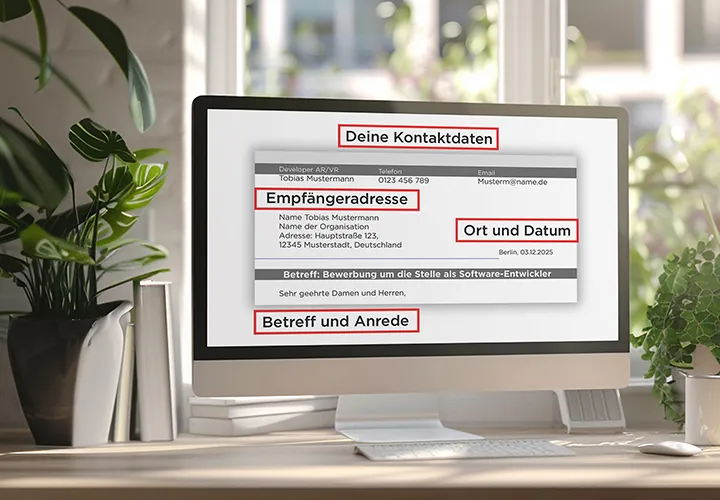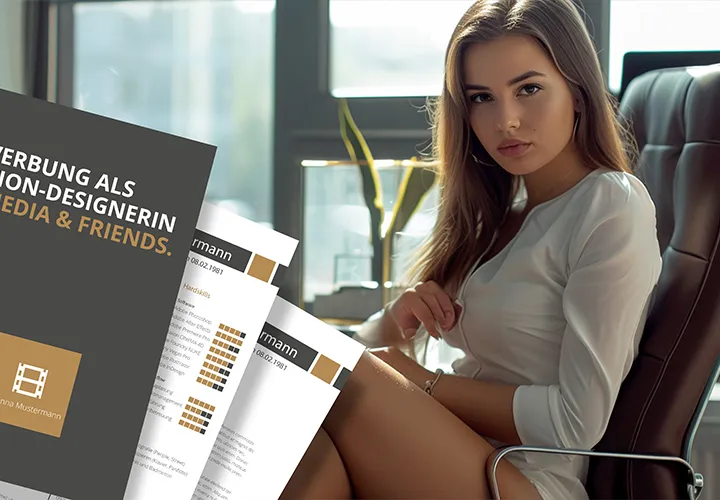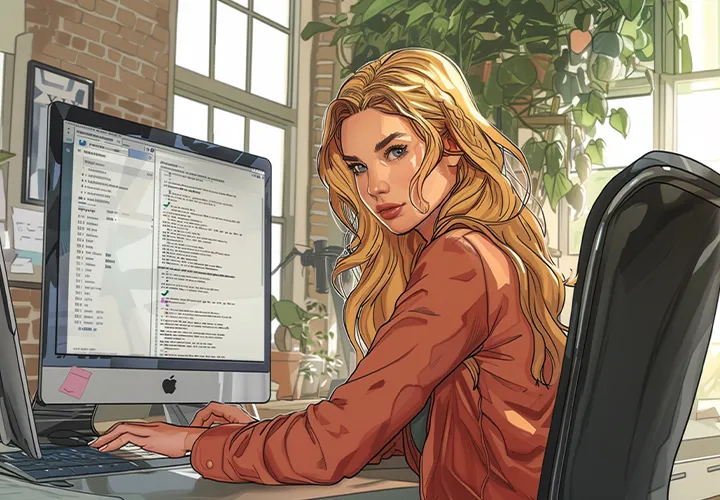Writing a cover letter correctly is not difficult - I'll show you how it's done.
Learn how to spark the employer's interest with the first sentences in your cover letter.
Cover letter in the application: What is it?
The cover letter is your personal door opener in the application process. It is the first text that your potential employer reads about you. Here you convince them that you are the right candidate for the position.
Unlike the resume, where you list your qualifications objectively, in the cover letter you can show your motivation. The employer wants to have three key questions answered:
- Why are you applying for this specific position?
- What makes you the suitable candidate?
- Why do you want to work for this company?
The cover letter is your opportunity to establish the connection between your skills and the requirements of the position. The employer looks for clues here that you have engaged with the position and the company.
A good cover letter sparks curiosity for more. It doesn't just summarize your resume, but highlights the most relevant aspects of your qualifications. You also demonstrate your communication skills and how well you can express yourself.
What you should write and avoid in the cover letter
The cover letter is like a construction set with fixed elements. You don't have to reinvent the wheel - there are proven formulations and a clear structure. Your cover letter does not have to be a creative masterpiece. The hiring manager is not looking for literary talents, but for specific information in an understandable form.
The trick is to choose the right building blocks and put them together effectively. Use professional formulations that hiring managers expect and can quickly grasp. This means: Choose appropriate standard phrases for each section and adapt them to your specific situation. Insert your specific qualifications and directly refer to the job advertisement.
It is important to know what you should avoid. Colloquial language has no place in the cover letter, as well as overly personal information or excessive creativity. Long, convoluted sentences also hinder readability. Standard phrases without real meaning only tire the reader.
The cover letter is a business letter, not a creative essay. It must be professional and to the point. With the right building blocks, you create a convincing cover letter that provides exactly the information that the hiring manager is looking for. In the end, there is a flawless text that clearly communicates your qualifications.
Structure of the Cover Letter
- A professional cover letter is structured as follows:
- Header (Contact information, Date)
- Subject line
- Introduction (Reference to the position)
- Main part (Qualifications)
- Closing (Availability)
- Greeting and Attachments
The header forms the formal framework of your cover letter. Here you include all important contact information according to DIN 5008. Pay special attention to the correct address of the company and try to mention a specific contact person. This demonstrates your research skills.
The subject line is your first substantive contact with the HR manager. It must contain the exact job title as stated in the job advertisement. If a reference number is provided, include it. Omit the word "Subject" - it is outdated.
In the introduction, you show that you have familiarized yourself with the company. Mention the source of the job advertisement and briefly explain why this position specifically interests you. Be concrete and avoid clichés. Two to three strong sentences are completely sufficient here.
The main part is your stage. Here you establish the connection between the job requirements and your qualifications. Support your skills with specific examples from your career. Explain how your experiences can benefit the company. Also, show why you are interested in this particular company.
In the closing, be practical. Mention your availability and, if required, your salary expectations. Signal your interest in a personal interview. The conclusion should be confident but not demanding.
The closing greeting remains classic with "Yours sincerely". Below that should be your signature. At the end, reference your attachments - this shows that your application is complete.
Cover Letter via Email
A cover letter via email differs in some important points from a traditional application. The biggest difference: You have two texts to consider - the email itself and the cover letter as an attachment.
The email serves as a brief accompanying text. It includes the subject line with the job title and a short text of three to four sentences. Here, briefly mention your interest in the position and refer to your attached documents. The email is like your digital envelope.
The actual cover letter comes as a PDF file in the attachment - along with your resume and all relevant certificates. Remember: All documents must be professionally formatted and perfectly legible. It is best to combine all documents into a single PDF file.

